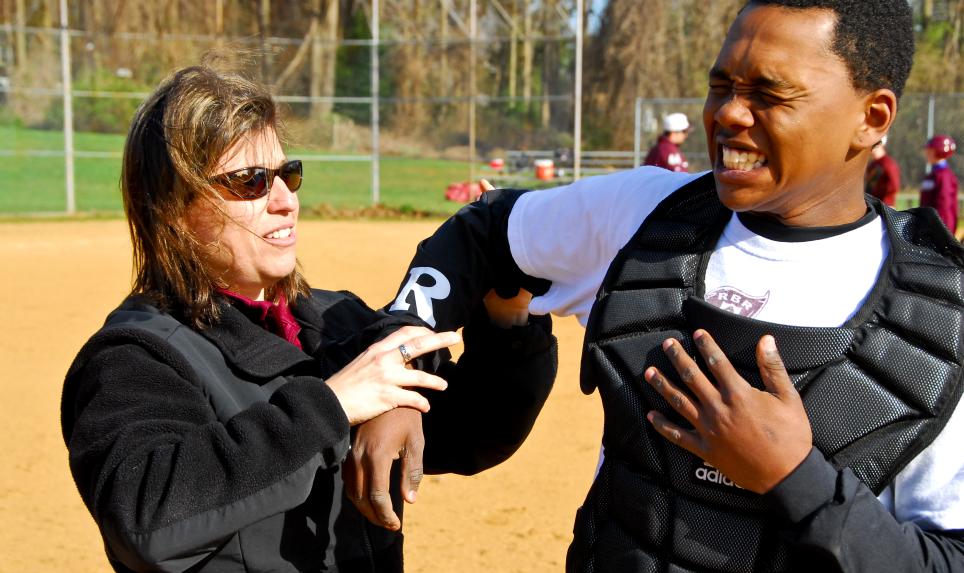Athletic Trainers in Youth Sports
Athletic trainers provide preventative, emergency, and rehabilitative health care services in colleges and universities across the United States.

Roles and Responsibilities
One of the largest areas employing athletic trainers is the college/university job setting. ATs are employed in all NCAA divisions in addition to intramural, club and junior college athletic programs. ATs working in this setting prevent, treat and rehabilitate the injuries of more than 460,000 student athletes at more than 1,000 educational institutions across the United States.
The ATs assigned to a collegiate athletic team often become part of the fabric of the team dynamic. The ATs are often present at practices, competitions, road trips, team meals and other team activities. As a result of these frequent interactions ATs develop deeply unique and profound relationships with the student athletes, coaches, sports administrators and other team support staff.

Often times, ATs are the first responder to a major physical and psychological injury – evaluating the injury, stabilizing the athlete and coordinating care, which could include referral to physicians for acute treatment or arranging for imaging and further action. The management of the injury, from initial onset to full return, is often the AT’s responsibility under the direction of the treating physician. ATs coordinate care throughout the injury process up to and including return to sport and are uniquely qualified to establish injury treatment protocols, modification of activity, gradual progression of activity, maintenance of fitness and functional return to sport.
As partially described above, the effective management of behavioral and mental health wellness and diagnosed mental health conditions typically begins with the AT. Once a care plan is established with the AT, team physician and mental health professional, the AT remains at the center of communication. The athletic trainer can be, and often times IS, the first person the student athlete seeks to help in these areas. Death of a loved family member, break up with a significant other, difficulty with team dynamics, reduced playing time, social issues and economic strain illustrate a few of the examples that student athletes tend to discuss with ATs.
As it relates to COVID-19 and the challenges relating to student athlete health and safety, the AT is one of the athletic department staff’s best equipped staff member to provide daily support. ATs maintain an educated perspective regarding not only injury management, but the importance of sleep, activity and social connectivity. Acting as a conduit to resources to advocate for the best interests of each individual and team, the AT acts as the liaison from the department and program
to the student athlete. Challenges faced may relate to injury management and rehabilitation; coordination of follow up/ compensatory medical care; referral to specialists/imaging/physical therapy; mental health (ranging from depression and anxiety to bipolar and true mental health crisis); concussion recognition, evaluation and management, insurance processing and nutrition. Current struggles may also include difficulty adjusting to the new normal, accessing resources and many other new situations that arise from the uncertainty of COVID-19. The intercollegiate student athlete will engage with an AT to find guidance.
As COVID-19 presents new and unique challenges never seen before, ATs and team physicians must prepare for an eventual safe return for all student athletes to our respective campuses. Especially in anticipation of resuming training and competition, the reliance on our ATs may be most important now considering their expertise, connections and unique skill set. The preparation for this initiative is ongoing and constant and must exist in a continuum. Interrupting this initiative, and failure to recognize the vital role of the AT, will directly impact the health and safety of all student athletes.